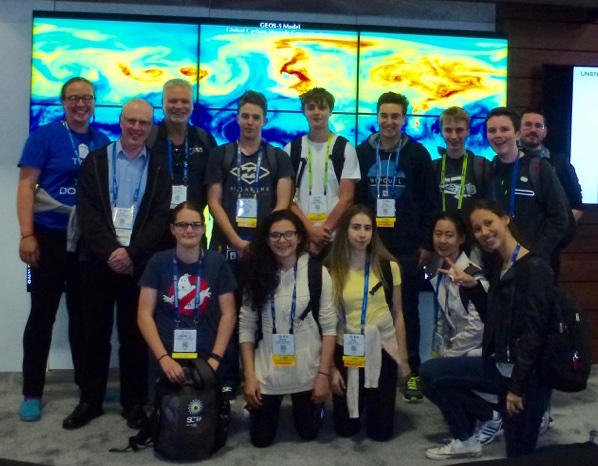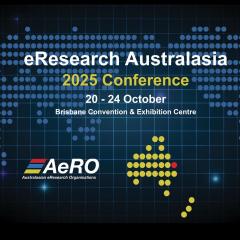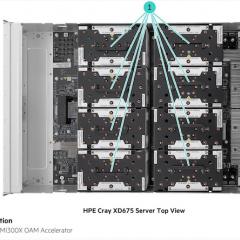
Six high school students attended SC16, the world’s largest supercomputing conference, last month with support from RCC and technology companies SGI and ScaleMP.
Two students from Brisbane’s Faith Lutheran College and four students from the Queensland Academy of Science, Maths and Technology headed to Salt Lake City, Utah, U.S., for the 13–18 November conference.
They joined four students from Melbourne’s John Monash Science School, whose school funded their attendance.
All of the students came away with a new appreciation of supercomputing and its broad range of applications, and an interest in pursuing it further.
Faith Lutheran College student Annabelle Cormack summed it up best: “I now know that if I chose an IT degree for university, I wouldn’t be limiting myself to game creation or computer building, I’d be opening myself up to a whole range of different careers — the possibilities are limitless.”
Trip reports from Annabelle and fellow Faith Lutheran student Jack Collins are below, as well as reports from QASMT students Courtney Zhan and Joshua Gilligan.
RCC acknowledges the financial support of SGI and ScaleMP to make this trip possible, with special thanks to SGI for providing the students with a booth tour across SC16’s extensive showfloor.
Student trip reports
Joshua Gilligan (QASMT)
This term the four of us [from QASMT] were lucky enough to attend the Supercomputing Conference 2016 in Salt Lake City, Utah. The experience was inspiring and unforgettable. It was amazing to talk to professionals who are at the top of their field. We saw the pioneering research into HPC and the growing demand for supercomputing in our new future.
We were selected for this trip based on our project in the school's HPC club. We collected environmental data about the school's newest building, J‐Block. We collated this information into a database and visualised it on a website with live heat‐maps, line graphs and more. We did this project in collaboration with two other schools, John Monash Science School and Faith Lutheran College.
While at the conference, we attended a range of talks, keynotes, chats and panels. We were amazed about the future of computational software development for NASA's supercomputing facility. We listened to an engaging panel on cancer genome research and the convergence of biology and computer sciences. We also listened to a very informative talk on post CMOS technology and teaching exascale systems.
We all enjoyed this amazing trip. It really gave us an insight into the future of supercomputing, a field that could be in our future.
Courtney Zhan (QASMT)
I found the 2016 Supercomputing Conference to be a very enjoyable learning experience.
Meeting the other schools and learning how they did things, including the projects their clubs worked on, really opened my mind to what students and supercomputing are capable of and the different ways to do a project — a lesson that my club at QASMT will definitely learn from.
What I found particularly interesting was that a professor in Biomedical Engineering from the University of Utah, Dr Orly Alter, had worked with various other scientists to find a way to predict an illness based on a result given through an algorithm. I found this very fascinating and I now want to know more about supercomputing's abilities and how it can help to improve our daily lives.
We also met with a few people that worked at NASA (at the conference and at the University of Utah), and they gave us some very insightful and motivating advice about learning, jobs and university. I was also able to talk and listen to some very successful people in the field of supercomputing, such as Katherine Frase, CTO and Vice‐President of the Public Sector at IBM; James Clark, Co‐Founder of Netscape; Dr Robert Hood, Senior Manager of NASA; and managers of the Sunway TaihuLight, currently ranked first on the HPC Top 500 list.
In summary, I am really thankful for the opportunity I have been given by UQ and QASMT to go to SC16 and I have not only enjoyed myself, but also have learnt many things from the people I have met and the discussions we have had.
Annabelle Cormack (Faith Lutheran College)
Getting the chance to go over to the 2016 Supercomputing Conference was a once in a lifetime opportunity. Being in a place that has everything related to supercomputing in one spot definitely opened my eyes to how big this community is.
In particular, the talks, seminars and keynotes on Monday and Tuesday [14–15 November] showed me that this isn’t limited to just computers and IT, it is beneficial to any field of work, such as education or medicine.
I now know that if I chose an IT degree for university, I wouldn’t be limiting myself to game creation or computer building, I’d be opening myself up to a whole range of different careers — the possibilities are limitless.
Jack Collins (Faith Lutheran College)
The 2016 Supercomputing Conference in Salt Lake City, Utah, was a breathtaking experience that I will never forget.
We just lost time taking everything in, from speeches on deep learning and how it can affect other fields of work, to learning about the latest hardware on the market and what they will bring to the table.
I think that both Annabelle [fellow Faith Lutheran College student Annabelle Cormack] and myself learned what we can get out of the industry, and also where we can go to add to it.
Computer Science is looking more and more like a field that I would personally like to enter — there is an incredible range of challenges that need to be tackled and I would like to throw my hat into the ring and try my hand.
Read the John Monash Science School’s newsletter for its SC16 trip report.



